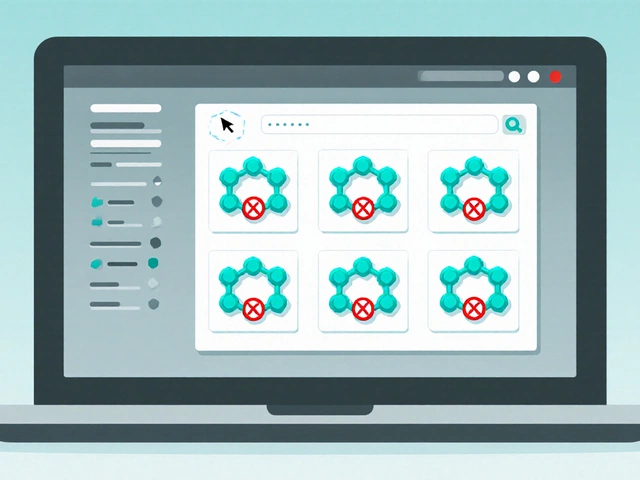Ideas hold immense power. Particularly in the manufacturing sector, where processes and products can always be improved, a singular innovative thought can reshape a company's trajectory. Startups, often rich in creativity but limited on finances, must navigate the tricky waters of whether, and how much, to pay for groundbreaking ideas.
There’s an ongoing debate: does monetarily rewarding ideas quench inventive spirits, or does it, in fact, fuel a relentless quest for better solutions? The impact of this decision resonates beyond finances; it's about shaping company culture and driving sustained growth.
In this exploration, we'll delve into what happens when startups decide to put their money where the creativity is. We’ll look at stories of those who have succeeded, faced challenges, and learned valuable lessons along the way. For many, the path to innovation involves carefully considering how ideas are valued and what they're ultimately worth.
- The Value of Ideas in Manufacturing
- Challenges of Rewarding Innovation
- Successful Models and Case Studies
- Balancing Financial Investment with Creativity
- Creating an Incentive-driven Culture
The Value of Ideas in Manufacturing
Ideas in the world of manufacturing ideas are not just random thoughts; they are the seeds of change, the beginnings of innovation that can transform industries. It's crucial to recognize that the manufacturing sector thrives on refining processes, reducing waste, and improving efficiency. In this field, a single innovative concept can lead to massive productivity gains and cost reductions. The value of such ideas is immense because they can bring about competitive advantages, allowing companies not only to survive but to flourish in an ever-evolving market.
For startups introducing their manufacturing ideas, creativity often becomes their biggest asset. Take the example of Toyota's Kaizen, a philosophy centered around continuous improvement. Toyota’s drive for constant refinement made them leaders in the automotive industry. A similar spirit can be instilled in startups. Ideas aim to optimize inventory, innovate supply chains, or embrace sustainable manufacturing practices have transformative potential. The right adjustments, grounded in innovative thinking, can minimize resource use while maximizing output, benefiting both the company and the environment.
Investing in ideas also means investing in people. Encouraging team members to contribute creatively demonstrates a company’s appreciation for their insights. When employees feel their ideas are valued, they are more likely to engage deeply with their work, resulting in overall enhancement of productivity and innovation. According to a recent survey, companies that foster an inclusive atmosphere for innovation see a 20% increase in employee satisfaction and a 15% boost in productivity. This data underscores the significance of valuing ideas as a critical business strategy.
In some instances, rewarding innovation can take tangible forms. For example, Johnson & Johnson in its early days offered incentives for cost-saving ideas put forth by employees, resulting in a significant operational cost reduction. Today, various manufacturing startups offer financial incentives or equity stakes in exchange for inventive solutions. This practice, while sometimes risky in startups, can create an entrepreneurial culture within the company, encouraging employees to think outside the box and seek better methods of doing things. This approach aligns nicely with strategic management’s push towards viewing employees as partners rather than mere workers.
"The best way to have a good idea is to have a lot of ideas." — Linus Pauling, a dual Nobel laureate. His words echo deeply in manufacturing, where volume often leads to breakthroughs, reinforcing the idea that cultivating an environment where ideas can freely emerge is just as valuable as the ideas themselves.
To sum up, in the highly competitive landscape of manufacturing, ideas drive the engine of progression and competitiveness. They are crucial to adapting to market demands and technological advancements. By fostering a culture that values and rewards creativity, companies not only enhance their product offerings but also secure their place in the industry as leaders of innovation.
Challenges of Rewarding Innovation
Rewarding innovation within a manufacturing startup can seem straightforward at first glance, but it swiftly becomes a complex issue when put into practice. One of the primary challenges is determining the actual value of an idea. Unlike physical products, which can be easily assessed in terms of cost and expense, the value of an idea is more abstract and subjective. Assigning a monetary value to creativity can be daunting, as it involves predicting future profitability, which is inherently uncertain. This uncertainty can lead to internal conflict, as not all team members may agree on the assessment or perceived value of certain ideas.
In addition to valuation, there’s the issue of setting precedents. If a company rewards one innovation, employees might expect compensation for every suggestion, which could overwhelm the startup's limited resources. This raises a critical question: should all ideas be rewarded equally? And if not, how does a company create a fair system that encourages participation without fostering resentment among employees whose ideas aren't compensated? Creating a transparent system that addresses these concerns while fostering an open innovation culture is crucial.
Another challenge lies in the realm of intellectual property rights. As manufacturing startups often work at the cutting edge of technology and process development, determining the ownership of these innovative ideas can lead to disputes. An employee might develop an idea during official work hours, using company resources, which technically makes it the property of the company. Balancing legal frameworks with ethical considerations, such as recognizing individual contributions, is a complex but vital part of this process.
"The companies that sustain an innovation culture are those that understand the delicate balance of incentivizing ideas while maintaining a shared vision," said Professor Joseph Zwaan from the Harvard Business School.Beyond these practical issues lies a psychological layer: the effect of monetary rewards on creativity itself. Some researchers suggest that external rewards might undermine intrinsic motivation, leading individuals to focus more on 'selling ideas' rather than genuine problem-solving. The environment's atmosphere is pivotal in fostering genuine innovation, and companies must be cautious not to introduce elements that stifle the creative process.
Additionally, maintaining a balance between rewarding outstanding *innovation incentives* and not neglecting the essential day-to-day operations is critical. Focusing too much on extraordinary innovations might lead startups to inadvertently overlook incremental improvements that, over time, can significantly boost efficiency and productivity. A strategic approach that appreciates both revolutionary and evolutionary changes can support a balanced growth trajectory.

Successful Models and Case Studies
In the realm of manufacturing ideas, there are several companies that have successfully integrated innovative practices into their business models, creating a source of inspiration for startups globally. Take 3M, for instance. Known for their legendary Post-it Notes, 3M is a testament to what can happen when a company embraces creativity. Their '15% rule' allows employees to dedicate a portion of their working time to personal projects, leading to ground-breaking products like Scotch Tape and other notable inventions that might not have seen the light of day under stricter operational guidelines.
By offering employees time to explore their ideas, 3M not only minimizes the risk associated with innovative projects but also actively encourages a flexible work environment where every idea has a place. This approach has yielded not only numerous profit-driving products but also positioned 3M as one of the most inventive companies worldwide, regularly topping innovation indexes. The structure essentially monetizes invention without direct financial rewards, instead fostering a culture where ideas naturally flourish.
Red Bull and the Power of Platforms
The beverage giant, Red Bull, provides another interesting example with their own innovative approach. The company doesn't just sell energy drinks; they sponsor extreme sports and create content through Red Bull Media House. By creating a platform for athletes and creators to reach the masses, Red Bull has built a strong brand identity that goes beyond their core product.
Here, the company's investment isn't into paying for ideas per se but in providing avenues for creatives to thrive, thereby indirectly sparking a wealth of creative content that draws consumers to their brand. It's a model many startup rewards programs can emulate by offering platforms instead of direct monetary incentives.
Another fascinating insight comes from a study conducted in 2021, surveyed over 500 businesses and found a 29% increase in product innovation when a structured reward system for creativity was in place. This participation not only leveraged intrinsic motivation but directly tied business metrics to innovation outcomes.
"By providing small monetary incentives, we've witnessed an exponential rise in creative engagement within teams," says Linda Frick, a senior innovation consultant.
Red Bull’s and 3M’s examples highlight a unique aspect often lost amidst the financial discussions surrounding innovation incentives: sometimes the best reward for an idea isn't direct payment. Instead, a fertile ground for creative processes can yield more comprehensive long-term results.
Startups aiming to infuse innovation into their operations can learn from these successful models. By creating environments where inventive thinking is encouraged and supported, enterprises can tap into a continuous flow of business creativity while aligning with business goals and financial realities. This strategic approach can turn mere ideas into lucrative ventures, giving startups a competitive edge in today's dynamic market landscape.
Balancing Financial Investment with Creativity
Navigating the landscape where financial investment intersects with creativity in the manufacturing industry is a delicate art. For manufacturing startups, striking the balance between the two is crucial. It's a myth that creativity thrives only in absence of financial pressure. On the contrary, when harnessed wisely, financial support can catalyze ingenuity. The challenge lies in judiciously allocating resources, ensuring that the financial backbone of an idea doesn’t undermine its unique spark.
Many entrepreneurs face a paradox: invest heavily and risk stifling the out-of-the-box thinking that birthed the startup, or underfund and risk stalling innovative processes. An efficient way to balance this is through incremental investment models, where funding correlates with developmental milestones. This keeps the pressure dialed down and nurtures steady creative progression. Moreover, establishing a transparent reward system for ingenious ideas can create a feedback loop, encouraging more contributions from the team.
Understanding the intrinsic value of investing in ideas also means acknowledging the potential intangible returns. It's not just about immediate profits. Sometimes, an idea may initially seem financially unfeasible, yet hold potential to open up new markets. For instance, consider the automotive industry's shift towards electric vehicles. Many manufacturers once sat on the fence, considering the concept financially dubious. But investment in this creativity-driven path unlocked new opportunities, changing the landscape entirely.
"It's not always about the money. Sometimes, the idea itself is the currency," remarked Chris Anderson, a notable TED chairman, reflecting on how ideas can propel a company's trajectory.
Another strategy some startups employ is embracing cross-industry partnerships. For instance, a manufacturing firm may partner with a tech startup to integrate cutting-edge digital solutions. This doesn't only share financial burdens but also introduces fresh perspectives, stimulating creativity. Also, incentivizing creativity through equity offers or profit-sharing can enhance ownership feelings among innovators, leading to amplified dedication and output quality.
When innovation incentives are in play, it is essential for startups to set quantifiable goals for their creative endeavors. A good practice is maintaining an innovation dashboard that tracks ideas from inception through execution. This approach not only helps in measuring ROI but also offers insights into which ideas yield the highest value for investment, steering future financial decisions. By adopting such practices, startups can ensure that their financial investments don't just support creativity but actively drive it, sharpening their competitive edge.

Creating an Incentive-driven Culture
Building an incentive-driven culture within a manufacturing startup is a nuanced task, balancing the fine line between fostering creativity and managing budgets wisely. It begins with the recognition that employees are not just cogs in a machine but the wellspring of novel manufacturing ideas that can propel a company forward. Establishing a culture where innovation thrives means creating a framework that motivates employees to think outside the box while ensuring these ideas align with the company's business objectives.
One of the most transformative ways to nurture such a culture is by publicly recognizing achievements and consistent idea contributions. Recognition can come in the form of awards, certificates, or even feature articles in company newsletters that highlight the person's contribution and its impact on the company. These public acknowledgments boost morale and create a positive feedback loop, inspiring others to think creatively and contribute more willingly. Statistics show that companies with strong recognition programs report a 22% lower turnover rate.
Incentives could also take the form of financial rewards. Monetary compensation for ideas can encourage a competitive, yet friendly, spirit among employees. However, it's crucial to strike a balance; rewards should not overshadow the sheer joy of creative problem-solving. Implementing a transparent reward system helps manage expectations and keeps enthusiasm alive without creating disparities. For example, an American company known for its innovation introduced an Ideas That Drive Us program, where employee ideas that significantly benefit the company receive a percentage of the generated savings.
Creating Space for Innovation
To build an incentive-driven culture effectively, companies should devote time and space for creative thinking. Designating 'innovation hours' where employees can explore new methods, test out theories, or collaborate in brainstorming sessions can lead to breakthroughs. Google’s '20% time' famously allows employees to spend a fifth of their time on projects of their interest. A 2017 survey discovered that 92% of employees reported feeling more engaged with managerial support in idea generation. Star Wars, one of the most successful film series, originated as a side project during George Lucas’s experimental time.Create spaces that encourage not just physical, but mental freedom as well. Use visually stimulating environments like whiteboard walls to jot down spontaneous thoughts and ideas. Similarly, digital platforms can be employed for idea submissions, ensuring that there’s no obstacle to creativity.
"Incentivizing innovation doesn't just entail financial rewards but also involves recognizing the intrinsic value of freedom to be creative." - Dan Springer, CEO of DocuSign
By prioritizing these strategies, manufacturing startups can effectively create a viable ecosystem where employees feel valued and motivated to contribute their best ideas. It's about laying the groundwork where creativity is not merely encouraged but seen as an indispensable part of company culture. Combining recognition, financial rewards, and a conducive working environment ensures a dynamic flow of new, actionable ideas, pushing boundaries and setting the stage for innovative growth.











Write a comment